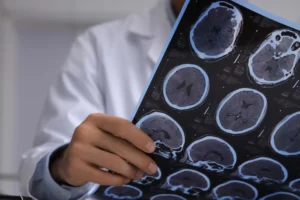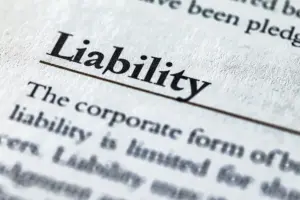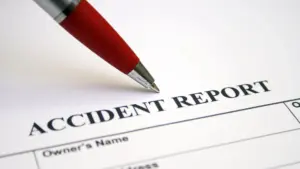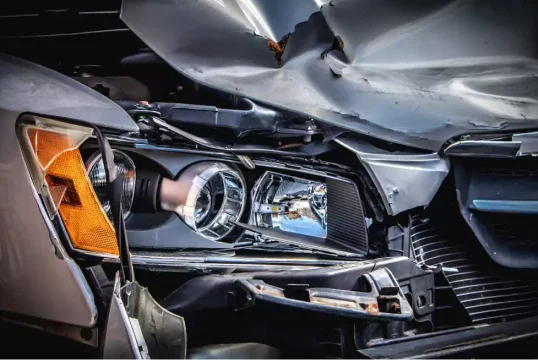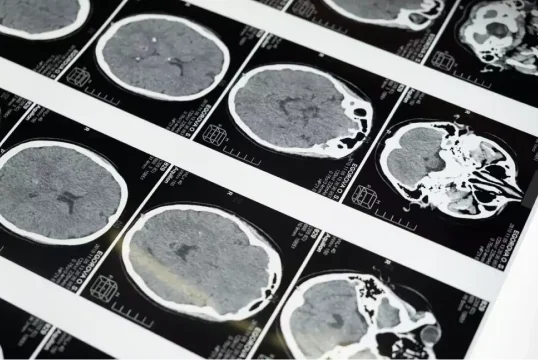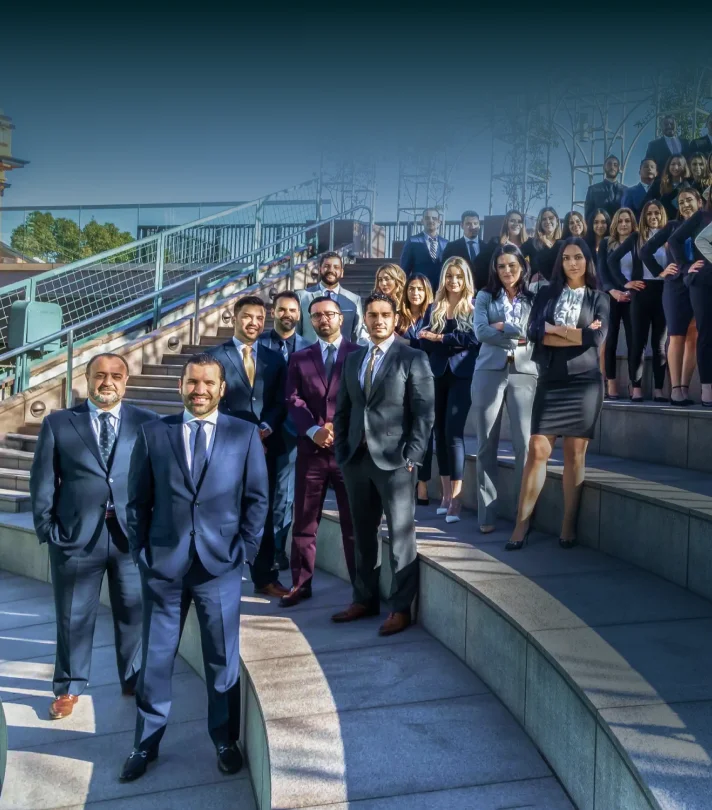With its bustling port, dense traffic, and active population of nearly half a million, Long Beach, like any other cosmopolitan city, sees its share of serious accidents. Today, we’ll talk about the causes, symptoms, and legal ramifications of accidents that lead to traumatic brain injuries, because when a traumatic brain injury occurs, it can turn your life upside down, making the right legal representation crucial for your recovery and future.
Whether a brain injury results from a car accident on one of Long Beach’s busy freeways or a workplace incident in the city’s industrial sectors, West Coast Trial Lawyers are fully equipped to handle the case from start to finish with full transparency every step of the way. We have an in-house trial team led by partners who have battled and defeated some of the world’s largest corporations on behalf of clients large and small. And we’re prepared to fight for you.
Take the first step toward healing with a FREE case review by calling (213) 927-3700 or complete this easy online contact form.
What Is a Traumatic Brain Injury?

A traumatic brain injury (TBI) occurs when an external force, such as a blow, jolt, or penetrating wound, disrupts the normal function of the brain. In Long Beach, where speeding, multiple construction projects, and bustling pedestrian zones are common, TBIs are an unfortunate risk for residents and visitors. These life-altering injuries can range from relatively mild concussions to severe brain trauma requiring around-the-clock medical care. The effects are not only physical but emotional and financial, placing immense strain on both victims and their families.
- Mild- Brain injuries are typically categorized by severity, from mild to severe. A mild TBI, often referred to as a concussion, may involve a brief loss of consciousness—less than 30 minutes—or no loss of consciousness at all. Individuals with a mild TBI might experience temporary confusion, dizziness, nausea, or headaches, but in many cases, a full recovery is possible with rest and proper medical attention.
- Moderate- A moderate TBI is more serious and involves a loss of consciousness lasting anywhere from 30 minutes to 24 hours. People with this level of injury may deal with cognitive or physical impairments that can last for several months or longer, often requiring physical therapy or other forms of rehabilitation.
- Severe- A severe TBI typically involves prolonged unconsciousness or a coma, and the long-term outcomes are far more devastating. Many victims of severe TBI are left with permanent disabilities that significantly impair their ability to function independently or return to work.
Beyond the immediate health consequences, TBIs often lead to lost income, accumulating medical expenses, and a lingering sense of uncertainty regarding the future. Adding to the complexity, brain injuries can be difficult to detect right away. Unlike a broken bone or visible wound, a brain injury may not produce symptoms until days or even weeks later. Victims may begin to experience memory lapses, mood changes, or trouble concentrating—complications that not only hinder treatment but also complicate legal claims, which often hinge on clearly documented symptoms and timelines.
Common Causes of Brain Injuries in Long Beach
Long Beach’s unique geographic location and thriving economy can contribute to brain injury cases in several ways. Among the most common causes of brain injury is motor vehicle accidents. With major freeways like the 405, 710, and 91 running through the city, high-speed collisions are not uncommon. Even with modern safety features such as airbags and seatbelts, drivers and passengers can suffer head trauma during rollovers, side-impact crashes, or rear-end collisions.
Workplace Accidents
Workplace accidents are another leading cause of brain injuries. And with Long Beach being home to one of the busiest ports in the country, it also hosts three of the most accident-prone jobs. According to the CDC – freight trucking , construction, and warehouse workers face increased risk for TBI. In these environments, head injuries can result from falls, being struck by heavy equipment, or accidents involving machinery. Thus, employers have a duty to ensure safety protocols are in place and that workers are properly trained. Failure to do so can result in life-changing injuries.
Slip and Fall Accidents
Slip and fall accidents also account for a significant portion of brain injury cases. Uneven sidewalks, wet floors, poor lighting, and inadequate property maintenance on both public and private property can all contribute to accidents that cause serious head trauma. When property owners fail to maintain safe conditions, they can be held legally responsible for the injuries that occur.
Sports Injuries
Sports injuries are particularly common among younger residents. Long Beach schools, athletic leagues, and community sports programs all present environments where concussions and other TBIs can occur. Contact sports such as football, as well as cycling and skateboarding, are high-risk activities, especially when participants aren’t provided with proper helmets or are exposed to unsafe playing surfaces.
Outdoor Activities
The city’s bicycle and pedestrian infrastructure, while expanding, is not without its hazards. A growing population in a city with so much to do outdoors increases risk of collisions with vehicles. Pedestrians and cyclists struck by cars are particularly vulnerable to brain injuries, as they have little to no physical protection at the moment of impact.
Medical Malpractice
Finally, medical malpractice can also lead to brain damage. Mistakes during surgery, errors in administering anesthesia, failure to recognize oxygen deprivation, and delayed diagnoses are all scenarios in which preventable brain injuries may occur due to a medical professional’s negligence. While medical malpractice cases are rare, it does not mean it can never happen and due to the nature of medical malpractice cases, it requires extensive evidence to prove negligence.
Legal Requirements for Brain Injury Cases in California
Navigating a brain injury lawsuit in California involves several legal considerations, the first of which is the statute of limitations. Generally, victims have two years from the date of the injury to file a personal injury claim. However, California recognizes the “discovery rule,” which can extend this deadline if symptoms are not immediately apparent or if the injured party could not have reasonably known that negligence caused their condition. This is especially relevant in brain injury cases, where symptoms may not emerge until long after the initial incident.
How to Prove Negligence
To win a brain injury lawsuit, plaintiffs must prove negligence by establishing four core elements. First, it must be shown that the defendant owed the victim a duty of care. For example, a driver’s duty to follow traffic laws or a property owner’s duty to maintain safe premises. Next, there must be a breach of that duty, such as texting while driving or failing to fix a known hazard. The plaintiff must then demonstrate causation, meaning the breach directly led to the brain injury. Finally, the victim must prove damages, such as medical bills, lost wages, or pain and suffering, as a direct result of the injury.
Burden of Proof
California uses a “preponderance of the evidence” standard in civil cases. This means the plaintiff must show that it is more likely than not that the defendant’s negligence caused the injury—an easier standard than the “beyond a reasonable doubt” requirement used in criminal trials.
Importantly, California follows a pure comparative negligence model. This means that even if the injured party is partially at fault, they can still recover compensation. The amount of damages awarded will simply be reduced by the percentage of fault. For example, if the victim is found to be 20% responsible for the accident, they can still recover 80% of the damages.
Determining Liability in Long Beach Brain Injury Cases
Determining who is legally responsible for a brain injury requires a thorough investigation of how the injury occurred and an understanding of the laws that apply to that situation. Depending on the circumstances, multiple parties may be held accountable. In motor vehicle accidents, the liable party is often a negligent driver who was speeding, distracted, or under the influence. In premises liability cases, the responsible party could be a property owner who failed to maintain safe conditions—such as fixing a broken stair or cleaning up a spill.
In workplace injury cases, especially in Long Beach’s construction or port sectors, employers can be liable for failing to provide proper training, safety equipment, or supervision. Product manufacturers may also be held responsible if a defective helmet, machine, or piece of safety gear contributes to the injury. In medical malpractice claims, doctors, nurses, and hospitals can face liability if they made preventable errors that led to oxygen deprivation or other forms of brain damage. Even government agencies can be liable if unsafe road conditions or public property hazards played a role.
Compensation Available to Brain Injury Victims
Victims of brain injuries in California may be entitled to several types of compensation aimed at covering both financial losses and the intangible impact of the injury. These are typically divided into economic damages, non-economic damages, and, in some cases, punitive damages.
Economic Damages
Economic damages are quantifiable and intended to reimburse victims for their out-of-pocket expenses and lost financial opportunities. These include medical expenses such as hospital bills, surgery costs, physical therapy, medications, and any medical equipment needed for recovery or long-term care. Victims may also receive compensation for future medical expenses, especially if the injury requires ongoing treatment or permanent care.
Lost wages are another key component, covering income missed while the victim was recovering. In cases of permanent disability, compensation for lost earning capacity is also available, reflecting the victim’s reduced ability to earn a living. Some individuals may need to modify their homes to accommodate mobility issues, such as installing ramps, wider doorways, or specialized bathrooms, which also qualifies as recoverable economic loss.
Non-economic Damages
Non-economic damages compensate for more subjective losses. These include pain and suffering caused by the physical and emotional trauma of the injury. Many victims of brain injuries experience a loss of enjoyment of life, meaning they are no longer able to participate in activities or hobbies they once loved.
Emotional distress, such as anxiety, depression, or post-traumatic stress, can also be part of a personal injury claim. Additionally, loss of consortium may be awarded when the injury damages the relationship between the victim and their spouse or family members, often due to personality changes, physical limitations, or emotional distance resulting from the trauma.
Punitive Damages
In cases where the defendant acted with gross negligence or willful misconduct, courts may award punitive damages. These are not meant to compensate the victim, but rather to punish the wrongdoer and deter similar behavior in the future. For example, a drunk driver who causes a crash resulting in a brain injury could be subject to punitive damages on top of the standard compensatory amounts.
Brain injuries are some of the most expensive injuries to treat and live with. According to the National Library of Medicine, the lifetime cost of caring for a person with a severe TBI varies in the millions, factoring in medical bills, assisted living, rehabilitation, and lost income. The full range of compensation should reflect both the present and future needs of the injured party.
The Long Beach Brain Injury Legal Process
Understanding how a brain injury case unfolds can help you better prepare for what’s ahead and make informed decisions. The process typically begins with a free initial consultation. During this meeting, the attorney will review the facts of your case, evaluate the medical documentation, and explain your legal rights. They will also assess the strength of your claim, identify potentially liable parties, and lay out a potential case strategy. You’ll also discuss how fees and costs will be handled—most injury attorneys work on a contingency fee basis, meaning you don’t pay unless you win.
Evidence Gathering
Once you retain an attorney, the next step is the investigation and evidence-gathering phase. This is one of the most critical stages, as it lays the foundation for your case. Your legal team will collect accident reports from police or workplace safety agencies, medical records that document the diagnosis and treatment, and statements from witnesses who saw what happened. Surveillance footage from nearby cameras can often provide crucial visual proof of the incident. In more complex cases, expert testimony from neurologists, accident reconstruction specialists, and life care planners helps connect the injury to the incident and establish the long-term consequences. Photographs of the accident scene or defective equipment also help paint a clearer picture for the court or insurance adjusters.
Settlement vs. Trial
Many brain injury cases settle before going to trial. Settlement negotiations often involve your attorney presenting the evidence to the at-fault party’s insurance company and making a demand for compensation. Insurers may respond with counteroffers, and your attorney will advise you on whether to accept a proposed settlement or continue negotiating. If no fair settlement can be reached, your lawyer will file a lawsuit.
This complaint, officially filed with the court, will outline the legal basis of the claim, the parties involved, and the damages being sought. This begins the discovery process, where both sides exchange evidence. Each side then builds its case while also getting a sense of the strengths and weaknesses of the opposing side’s argument. Your attorney will present the full case, including expert testimony, medical records, and eyewitness accounts, and either a judge or jury will determine liability and damages.
Legal Challenges in Brain Injury Cases
Brain injury litigation presents several unique challenges that require experienced legal representation to navigate effectively. One of the biggest hurdles is proving invisible injuries. Unlike broken bones, brain injuries don’t always appear on X-rays or standard medical imaging. Insurance companies often use this to their advantage, arguing that the victim’s symptoms are exaggerated, unrelated to the accident, or caused by preexisting conditions. An experienced attorney will work closely with neurologists, neuropsychologists, and radiologists who can provide more advanced diagnostics, like fMRI scans or neurocognitive testing, to establish the injury and its severity.
Insurance Companies Are Not Your Friends
Another common challenge is dealing with insurance company tactics. Insurance adjusters are trained to minimize payouts and may question the legitimacy of your symptoms. They might claim that your injuries existed before the accident or pressure you into accepting a lowball settlement before the full extent of your injuries becomes clear. Some insurers may even dispute your need for continued medical care, making it difficult to get the resources you need to recover. A skilled lawyer will anticipate these tactics and aggressively advocate for your best interests.
Projecting Future Costs
Calculating future losses is also particularly complex in brain injury cases. Estimating future damages, such as long-term medical care, therapy, lost earning potential, and diminished quality of life, requires a deep understanding of medical prognoses and financial modeling. Attorneys often work with life care planners, economists, and vocational experts to project future costs, taking into account inflation, changing medical needs, and potential life expectancy.
Coordination is Critical
Finally, coordinating between legal and medical teams is essential. A strong brain injury claim requires the close collaboration of attorneys, doctors, therapists, case managers, and other specialists. Together, they must present a clear picture of how the injury occurred, its current and future impact, and what kind of care the victim will need in the years to come. Without this coordination, critical evidence may be missed or undervalued—potentially costing the victim the compensation they deserve.
Choosing the Right Long Beach Brain Injury Lawyer
As you’ve probably determined by now, the attorney you choose can make a significant difference in the outcome of your case and your overall recovery journey. So it’s important to seek out a lawyer with specific experience handling brain injury cases, as these are far more complex than standard personal injury claims. Look for a firm that has a proven track record of success, including settlements and verdicts in similar cases.
Advantages to Look For
You’ll also want a lawyer who has access to a network of medical experts, accident reconstruction professionals, and life care planners who can strengthen your claim with expert testimony. Local knowledge is another major advantage. A Long Beach-based attorney will be familiar with the area’s courts, judges, and opposing counsel, which can be beneficial when navigating the litigation process. And finally, resources. Brain injury cases often require significant investment in expert witnesses, diagnostics, and trial preparation. Make sure your attorney has the ability to fund your case thoroughly.
Questions to Ask
When speaking to prospective lawyers, ask them “How many brain injury cases have you handled?”, “What were the outcomes?”, “Who will manage my case day-to-day?”, and “How often will you communicate updates?” Questions like these help you determine if the lawyer is the right fit. The right attorney will prioritize your well-being, fight for your future, and ensure you are fully informed throughout every step of the legal process.
Schedule Your FREE Consultation with West Coast Trial Lawyers Today
With its large multilingual staff of over 200 employees and 20 attorneys, West Coast Trial Lawyers is a 5-star law firm with 25 years experience and over 5,000 victories for accident victims. If you know someone who has suffered a brain injury, having a legal powerhouse on their side can help ensure they receive the justice and compensation they deserve. Reach out for a FREE case review by calling (213) 927-3700 or completing this easy online contact form. There are no upfront costs. We only receive a percentage of the settlement when we win.
